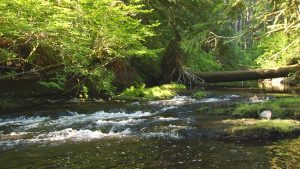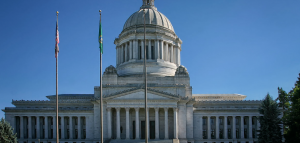WASHINGTON FOREST PROTECTION ASSOCIATION
Forest Industry Supply Chain
From planting and growing trees, to manufacturing wood and paper products to supply our home improvement and grocery stores, the forest products sector is a series of integrated segments that work together to supply renewable and recyclable carbon friendly products that we all use each day.
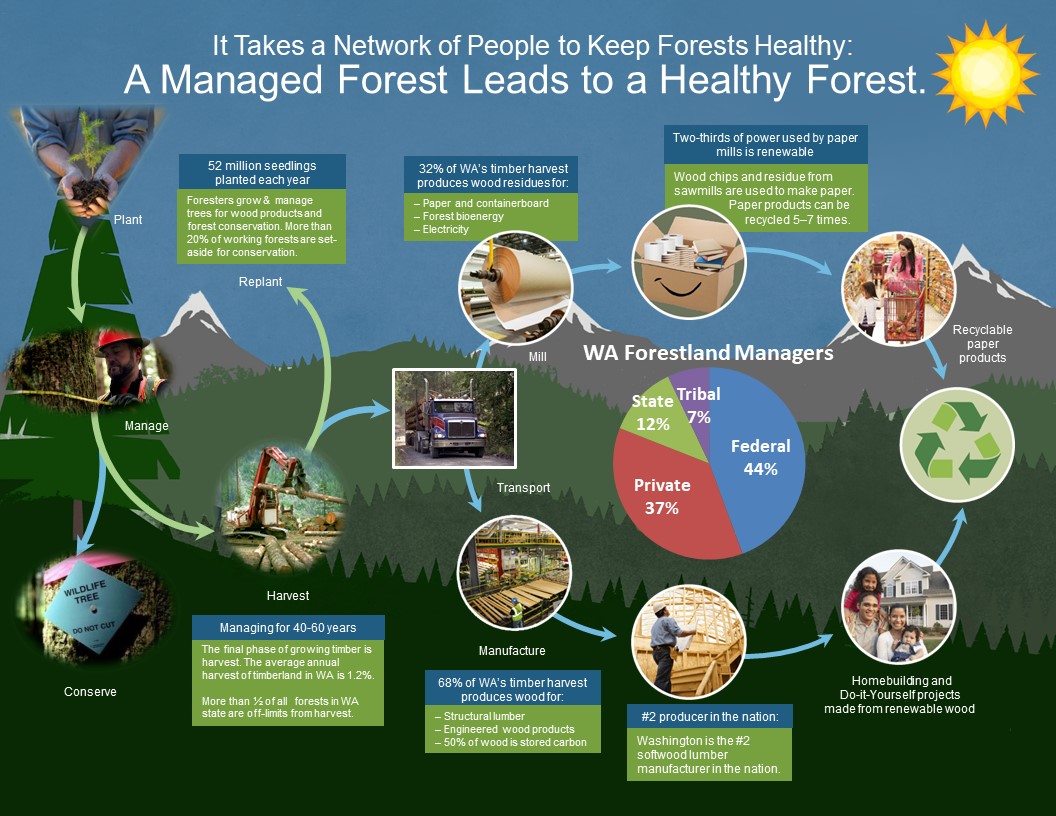
























Washington State boasts a vast landscape, with forests occupying half of its territory, primarily in the western region, beyond the Cascade Mountain Range. The state’s remaining areas consist of expansive agricultural lands, arid sage deserts, and towering mountain peaks. Urban centers have flourished where forests once stood. Each forest region in Washington presents a distinctive array of tree species, flora, and fauna. Foresters meticulously analyze local conditions, tailoring forestry programs to sustain and safeguard the native species unique to each region.
About two-thirds of Washington’s forestland is publicly owned, while the remaining one-third is privately owned.
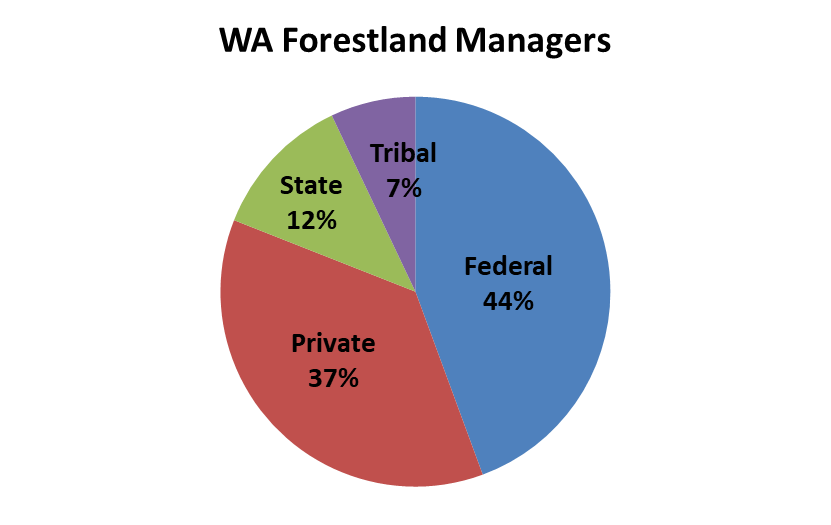
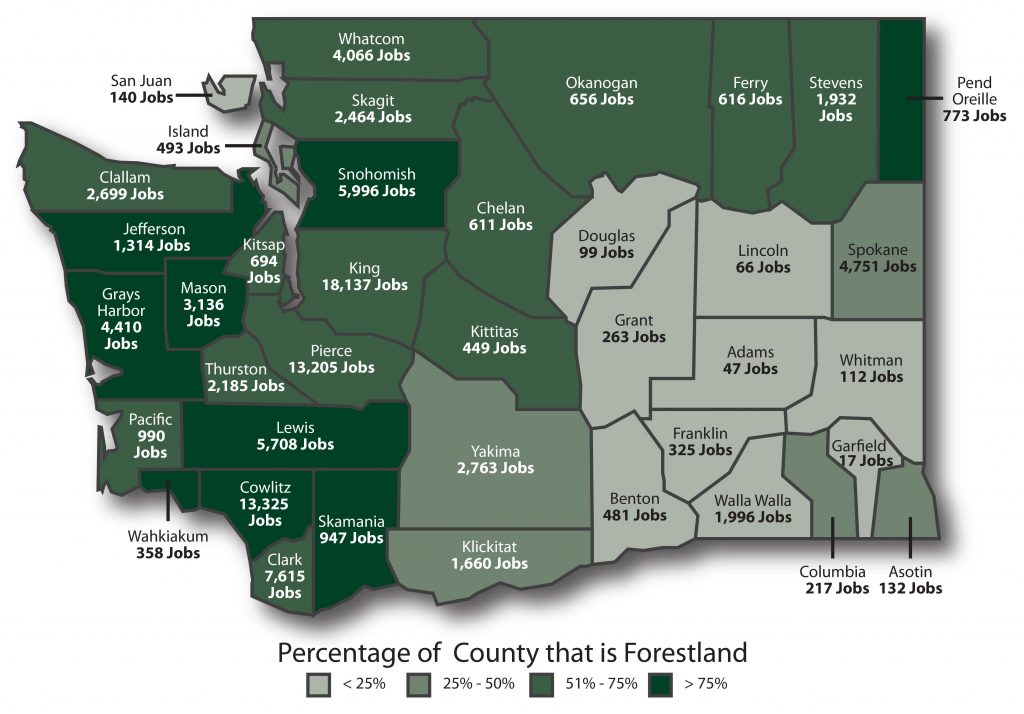
In Washington, 47% of our forests function as working forests, with the remaining 53% designated for preservation, including parks, wildlife refuges, and conservation areas on state, private, and tribal lands. Our national forests, parks, and wildlife refuges continue to thrive as they have for centuries. Meanwhile, in our working forests, trees are carefully cultivated, harvested, and replanted in an ongoing cycle, ensuring a steady supply of the forest products we rely on daily. To explore the working forests in your county, click here.
This diversity allows Washington’s forests to serve diverse economic, social, and environmental purposes. Working forests form the bedrock of the timber industry, employing over 101,000 individuals and contributing $5.5 billion in annual wages. This sustains the third-largest manufacturing sector in the state. Our commitment to active and sustainable forestry not only boosts revenues, taxes, and job opportunities but also produces renewable wood products that benefit society.
WASHINGTON'S FOUR DIVERSE FOREST REGIONS
Washington can be divided into four forest regions: Coastal, Lowland, Mountain, and Eastside. Each region is characterized by different growing conditions, climate, tree species, plant life and animals, and can encompass many different kinds of habitats.
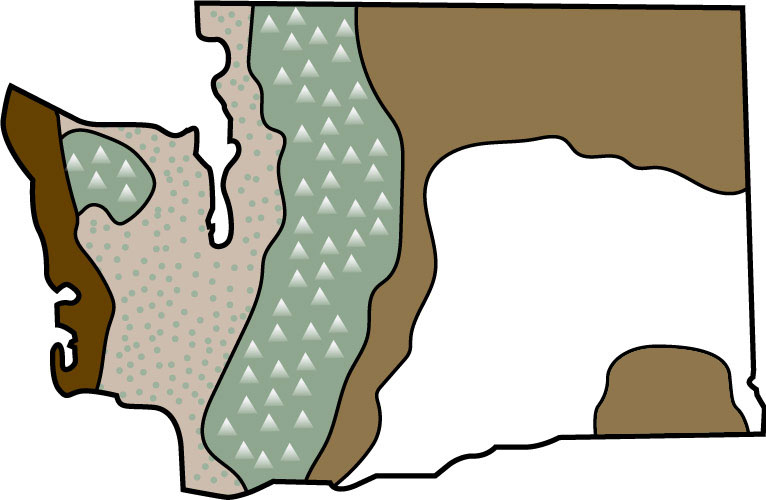
COASTAL FOREST REGION
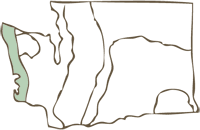
Located along the western coast of Washington, extending north to Alaska and south to northern California, this low-elevation region enjoys mild temperatures and abundant rainfall, with an average of 130 inches annually. The Pacific Ocean’s influence generates summer fog, adding moisture even when it’s not raining. Tree species like Sitka spruce, western red cedar, and western hemlock thrive in this wet environment, while Douglas-fir prevails in drier areas on slopes.
LOWLAND FOREST REGION
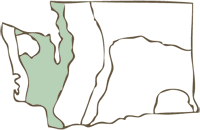
Stretching from the coastal region to the base of the Cascade Mountain slopes, the Lowland Forest Region is Washington’s largest forested area. It receives over 70 inches of annual rainfall and features mild temperatures, making it ideal for various tree species, including Douglas-fir, western hemlock, and western red cedar. Much of this region has been harvested, resulting in second- and third-growth forests.
MOUNTAIN FOREST REGION

Beginning at 2,500 feet elevation and reaching up to 7,000 feet, the Mountain Forest Region encompasses areas near the Olympic and Cascade Mountains. It offers diverse habitats and growing conditions due to varying elevations. Lower elevations feature dense evergreen stands, while higher elevations have fewer trees due to cold temperatures, short growing seasons, and thin soil. Tree species vary, with Douglas-fir, western hemlock, and others in the western elevations, and lodgepole pine, ponderosa pine, grand fir, and western larch in the mid-elevations of the eastern Cascades.
EASTSIDE FOREST REGION
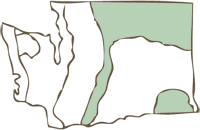
Recognizable by ponderosa pine trees, the Eastside forest region begins around 1,800 feet elevation, with concentrations of ponderosa pine stands rising to 3,200 feet. This region covers northeastern Washington, including the Okanogan Highlands, Ferry, Stevens, and Pend Oreille counties, parts of the Cascade Mountains’ eastern side, and the Blue Mountains in southeast Washington. Characterized by dry and arid conditions with low rainfall (6 to 20 inches annually) and extreme temperature fluctuations, this region is home to hardy plant life, primarily dominated by ponderosa pine. Other species like lodgepole pine, Douglas-fir, western larch, and western white pine also thrive in these challenging conditions.

